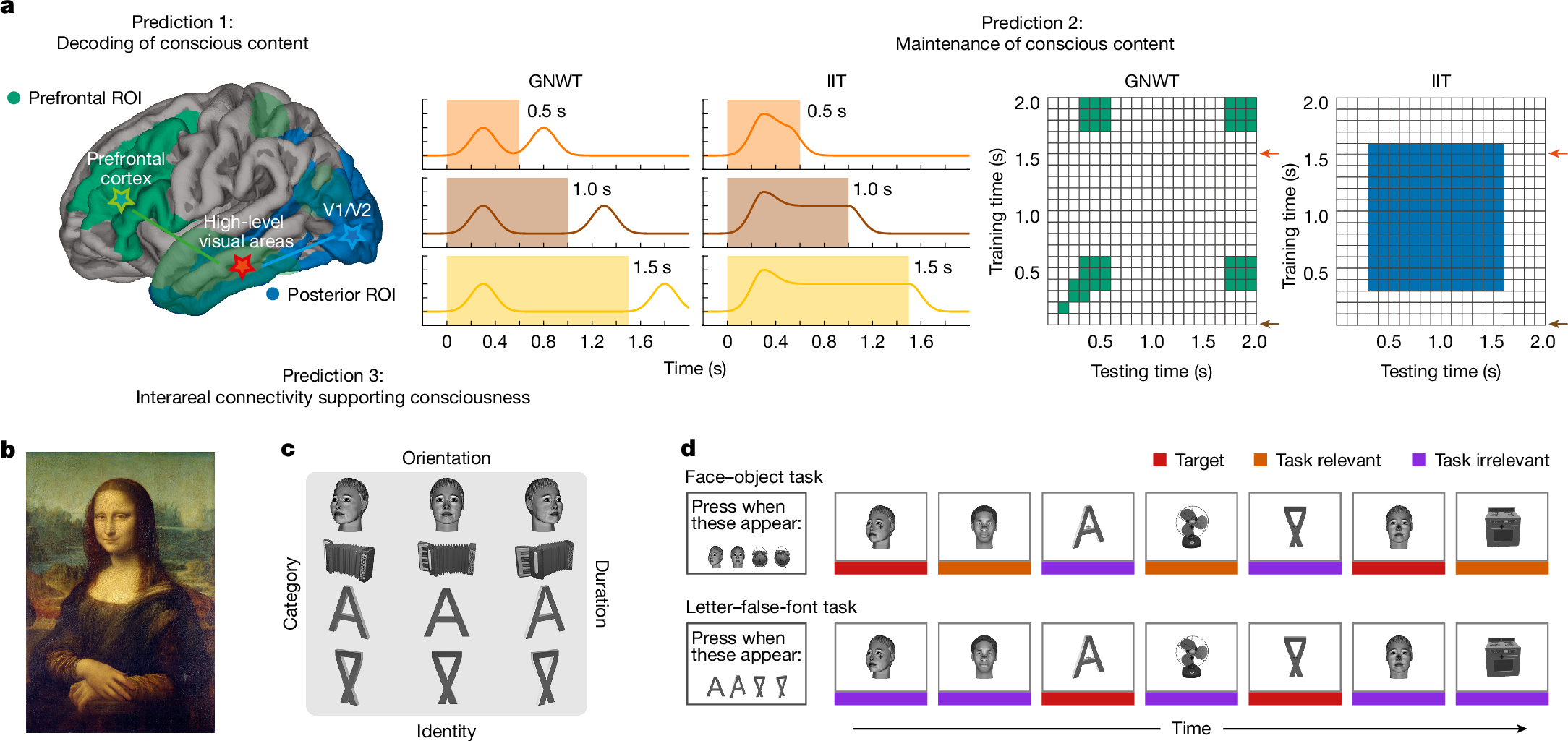2025-04-30 バーミンガム大学
<関連情報>
- https://www.birmingham.ac.uk/news/2025/landmark-study-puts-leading-theories-of-consciousness-to-the-test-neither-comes-out-unscathed
- https://www.nature.com/articles/s41586-025-08888-1
グローバルニューロン作業空間と意識の統合情報理論の敵対的検証 Adversarial testing of global neuronal workspace and integrated information theories of consciousness
Cogitate Consortium,Oscar Ferrante,Urszula Gorska-Klimowska,Simon Henin,Rony Hirschhorn,Aya Khalaf,Alex Lepauvre,Ling Liu,David Richter,Yamil Vidal,Niccolò Bonacchi,Tanya Brown,Praveen Sripad,Marcelo Armendariz,Katarina Bendtz,Tara Ghafari,Dorottya Hetenyi,Jay Jeschke,Csaba Kozma,David R. Mazumder,Stephanie Montenegro,Alia Seedat,Abdelrahman Sharafeldin,Shujun Yang,… Lucia Melloni
Nature Published:30 April 2025
DOI:https://doi.org/10.1038/s41586-025-08888-1

Abstract
Different theories explain how subjective experience arises from brain activity1,2. These theories have independently accrued evidence, but have not been directly compared3. Here we present an open science adversarial collaboration directly juxtaposing integrated information theory (IIT)4,5 and global neuronal workspace theory (GNWT)6,7,8,9,10 via a theory-neutral consortium11,12,13. The theory proponents and the consortium developed and preregistered the experimental design, divergent predictions, expected outcomes and interpretation thereof12. Human participants (n = 256) viewed suprathreshold stimuli for variable durations while neural activity was measured with functional magnetic resonance imaging, magnetoencephalography and intracranial electroencephalography. We found information about conscious content in visual, ventrotemporal and inferior frontal cortex, with sustained responses in occipital and lateral temporal cortex reflecting stimulus duration, and content-specific synchronization between frontal and early visual areas. These results align with some predictions of IIT and GNWT, while substantially challenging key tenets of both theories. For IIT, a lack of sustained synchronization within the posterior cortex contradicts the claim that network connectivity specifies consciousness. GNWT is challenged by the general lack of ignition at stimulus offset and limited representation of certain conscious dimensions in the prefrontal cortex. These challenges extend to other theories of consciousness that share some of the predictions tested here14,15,16,17. Beyond challenging the theories, we present an alternative approach to advance cognitive neuroscience through principled, theory-driven, collaborative research and highlight the need for a quantitative framework for systematic theory testing and building.

